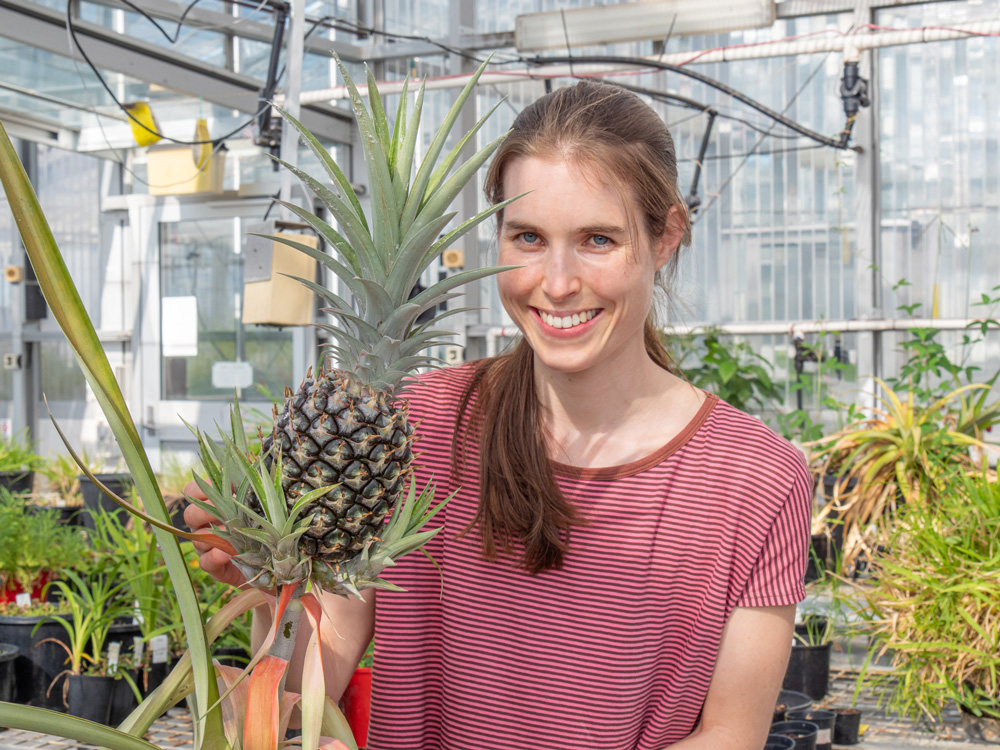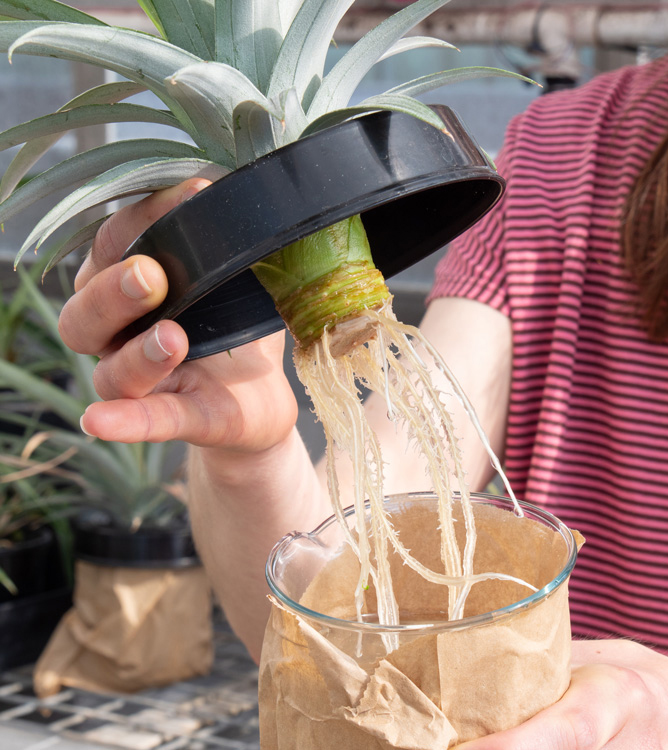Pineapple crop losses caused by root rot may soon be a thing of the past, thanks to new research on environmentally friendly biofungicides at The University of Queensland.
The project, led by University of Queensland molecular plant pathologist Dr Anne Sawyer, targets the pathogens that cause infected pineapple plants to wilt and die.

“Our aim is to minimise losses caused by plant pathogens, which will strengthen food security,” said Dr Sawyer.
She is developing biofungicides to combat pathogens that affect pineapple, avocados, and native Myrtaceae tree species.
These pathogens include Phytophthora cinnamomi, a fungal-like organism transmitted through soil that causes root rot.
“Phytophthora is the most dreaded pineapple pathogen in Queensland and worldwide, infecting plants throughout production,” Dr Sawyer said.
“It causes rotting of roots and anthocyanescence (reddening or purplish coloration) of foliage.
“Phytophthora is also one of the main factors limiting avocado yields in Queensland. Phytophthora-affected trees produce small, poor-quality fruit.”
There are approximately 35 million pineapples produced each year in Australia, mostly grown in Queensland. The fruit is native to South America.
Dr Sawyer works with Professor Neena Mitter who, together with Prof. Zhi Ping (Gordon) Xu, pioneered development of non-toxic RNA-based sprays – known as BioClayTM – to prevent a range of agricultural diseases and threats.

“These new biofungicides are designed to improve fruit quality, boost production efficiency, and reduce the use of chemicals in food production,” she said.
“BioClay uses a gene silencing technology that is precise and specific in the way it helps plants defend against pathogens.
“It is an environmentally sustainable alternative to chemical pesticides and leaves no residue on the produce.”
She is testing BioClay on pineapple tops and avocado seedlings to measure how effectively it protects against root rot.
Dr Sawyer said researchers were looking at using the technology to target inspect pests as well as viruses and fungi.
Dr Sawyer’s work is supported by an Advance Queensland Industry Research Fellowships which fund research that has an economic benefit to the state.
Other partners in the research include the Department of Agriculture and Fisheries who are supplying in-kind support through collaborative research and glasshouses for trials, Nufarm Limited, Scion New Zealand, Australian Pineapples, Greenlife Industry Australia, Kai Loa, Howe Farming Enterprises, Australian Native Products, and the Australian Tea Tree Industry Association.
Images are available on Dropbox.
Media: Professor Neena Mitter, n.mitter@uq.edu.au, +61 (0)434 628 094, +61 7 334 66513; Dr Anne Sawyer, a.sawyer@uq.edu.au +61 (0) 0422 285 190; Margaret Puls, m.puls@uq.edu.au, +61 (0)419 578 356.
The Queensland Alliance for Agriculture and Food Innovation is a research institute at The University of Queensland, established with and supported by the Queensland Department of Primary Industries.



